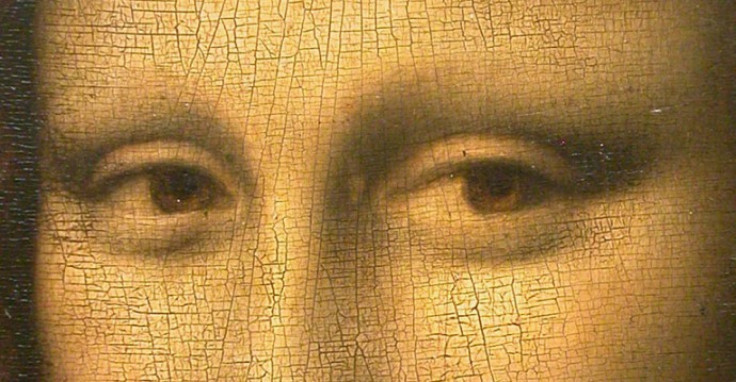Will Mona Lisa’s true identity be revealed?

Is there a real-life 'Da Vinci Code'? Was there a real message that Leonardo Da Vinci's 16th century masterpiece wanted to convey to the world?
Speculations about the painting seems to be endless - the identity of the sitter, the size of the original painting, her enigmatic smile and now, her eyes.
The Revelation
An Italian researcher has claimed that the enigmatic eyes of the Mona Lisa contain secret codes that could unravel an important aspect of the model's identity. Using high resolution images, the researcher found hidden deep in the dark pupils of the eyes small numbers and letters.
Invisible to the naked eye and painted in black on green-brown are the letters LV in her right pupil, obviously Leonardo's initials, but it is what is in her left pupil that is far more interesting, said Silvano Vincenti, chairman of Italy's National Committee for Cultural Heritage to U.K.'s Guardian.
Vinceti avers that the letters 'B' or 'S' or the possible initials 'CE' discerned could provide a vital clue in identifying the model.
It is very difficult to make them out clearly but they appear to be the letters 'CE', or it could be the letter 'B'. In the arch of the bridge in the background the number 72 can be seen or it could be an 'L' and the number 2, Vinceiti told the Daily Mail.
The Painting
The popularity of the avant-garde painting in the art world is undeniable. Painted by the Renaissance artist Leonardo di ser Piero da Vinci, Mona Lisa is regarded as the art world's most treasured collection.
The painting is a half-length portrait depicting a seated woman with ambiguous facial expressions set against a landscape in architectural settings.
The Mystery
The history of the painting is shrouded in mystery. A number of aspects of the painting are unclear including the identity of the sitter. Although ascertained at the University of Heidelberg in 2005 as Lisa Gherardini, wife of a Florentine cloth merchant named Francesco del Giocondo, a lack of definitive evidence has long fueled alternative theories.
One of the theories toyed with the idea that Leonardo used his own likeness to paint the portrait. Certain other aspects of the painting like who commissioned the portrait, how long Leonardo worked on the painting and how it came to be in the French royal collection also remains unclear.
The portrait is speculated to have been painted on one of the two occasions, either when Francesco del Giocondo and his wife bought their own house in 1503, or when their second son, Andrea, was born in December 1502 after the death of a daughter in 1499.
In the book The Da Vinci Code, the author Dan Brown suggests that Mona Lisa is an anagram for Amon l'Isa, referring Egyptian deities that represented male and female fertility.
The new research has brought together missing pieces of the mystery of the painting and Vinceiti has claimed that he would announce his conclusions on the Mona Lisa coming month.
© Copyright IBTimes 2024. All rights reserved.











